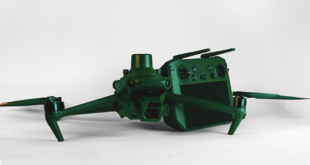A drone-delivered pizza feels like a good idea. A drone-delivered vaccine—especially one gently dropped into a place that’s otherwise hard to get to—feels like a great one. And while it might take a while for these things to show up at your specific door, hops forward in the budding drone delivery industry in the past few months make tech that once seemed like sci-fi fantasy feel more like an instruction manual.
Take this past week: On Tuesday, Google spinoff Wing scored the Federal Aviation Administration’s first certification for drone deliveries. It will start in Blacksburg, Virginia, delivering commercial packages weighing up to 3 pounds using its 11-pound vertical-lift aircraft. On Wednesday, California-based Zipline launched the world’s largest vaccine drone delivery network, a service in Ghana capable of conducting up to 600 daily, on-demand medical drone flights to 2,000 health care facilities across the country.
And less than a month ago, UPS and drone technology company Matternet initiated a medical-sample delivery system for hospitals in Raleigh, North Carolina.
Together, these announcements—a mix of regulatory, logistical, and technological successes—suggest that a future of personal airborne deliveries might not be too far away. “There have been some very exciting announcements recently,” says Ben Marcus, cofounder of an air mobility conference called Bentonville UP His company, AirMap, develops systems for integrating drones into public airspace. But he cautions that tech developers, drone companies, and especially governments and regulators still have serious work to do. “Regulatory timing is still naturally trailing the availability of technology,” he says.
It’s only natural for regulators to want to move more slowly than the technologists: The air can be a crowded place, and a drone-airplane collision would leave few winners. The ground is crowded, too—no one wants drones falling from the sky. So the FAA’s operational waiver for Wing is a big deal. Its permission gives the company the ability to launch deliveries, even out of the line of sight of professional operators, something that is required under current regulations. But they don’t have free rein over the skies: The government will require the company to monitor airspace, either with ground-based radar or human observers stationed on the ground.
Eventually, the FAA would like that monitoring to be automated. It’s currently developing a drone-traffic management system, which Marcus says should reduce the measures that individual companies like Wing have to deploy and, eventually, allow the entire industry to expand more rapidly. But the government will need drone operators to share data with one another and the administration and finalize the development of new technologies to make the system run.
More specific challenges are being addressed piecemeal through individual initiatives. Next week, Swiss technology firm Auterion is set to announce that it’s working with GE Aviation and the Defense Innovation Unit of the US Department of Defense to launch its open source autonomous-control program for drones. That platform can be used by consumer, commercial, and government drone manufacturers and can help boost transparency outside the industry, which might help build confidence among the public and regulators. And, critically, the system should help small drone players chip away at the market dominance of Chinese drone manufacturers, including DJI, by minimizing a complicated development road block: the operating system. Due to security concerns, the US government is prohibited from using drone technology provided by Chinese manufacturers.
Even with a sophisticated flight-management and tracking systems, drones can sometimes break or encounter unexpected obstacles. Companies are working on fixes here, too. Zipline uses ballistic parachutes to prevent its fixed-wing electric drones from going splat. Google’s Wing uses machine-learning-based algorithms to locate safe delivery points away from trees, buildings, and power lines. Swiss company Verity Studios has developed an algorithm that helps autonomous drones retain control if one or two rotors become disabled. When that happens, drones start to spin uncontrollably—so Verity’s system, called Failsafe, capitalizes on that spinning, working with it to stabilize the craft and regain control. According to company founder Raffaello D’Andrea, this can be done almost instantly. “When Failsafe is triggered, the drone will recover in a space of 2 meters or less and remains fully controllable in this novel spinning mode,” he says. “The operator can then manually navigate the drone to an appropriate landing location, or in the case of autonomous flight, you can ask the drone to ‘return home’ and it will navigate to its original take-off location and land using GPS.”
And flight enthusiasts are already looking forward to the next big thing: air taxis. Marcus says everything being done now in support of drone integration and automation will also be critical when it comes time for “flying cars,” which are essentially human-carrying drones. So the same tech that could soon drop a pizza pie on your lawn will one day pick your kid up from there, too.
 Unmanned Aerial Vehicle The latest drone news
Unmanned Aerial Vehicle The latest drone news



